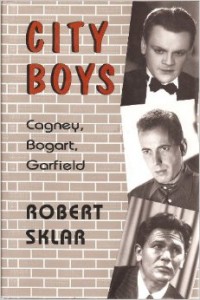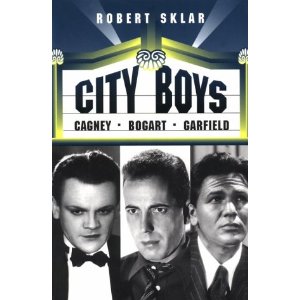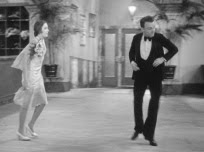Published in New York Newsday (Sunday, May 31, 1992). -– J.R.
CITY BOYS: Cagney, Bogart, Garfield, by Robert Sklar. Princeton University Press, 311 pp., $27.50.
BY JONATHAN ROSENBAUM
Perhaps the most refreshing thing about this comparative study of the Hollywood careers of James Cagney, Humphrey Bogart and John Garfield is that it lacks the deference to the film industry that one has come to expect nowadays from movie books, journalistic as well as academic. Eschewing the puffery of popular star biographies and the equally dubious (and self-serving) idealism of such academic buzz terms as “the classical Hollywood cinema” and “the genius of the system,” Robert Sklar, professor of cinema studies at New York University, writes with the vernacular ease of a journalist without sacrificing the analytical rigor one expects from a prestigious university press. While he hasn’t always spread his net as widely as one might hope, he still offers a plausible portrait of three city boys and how they grew -– or didn’t.
A social historian at heart, Sklar is basically interested in charting the diverse forces that molded and altered the screen images of Cagney, Bogart and Garfield. Their overlapping careers offer many instructive parallels: New York origins, theatrical training, evolving hard-boiled screen personalities, leftist sympathies, artistic and economic exploitation by the studios, struggles for independence (including the formation of their own production companies) with mixed results and elaborate enforced recantations of former political allegiances during the Hollywood witch hunts. Sklar also shows interest in a developing mystification about the class origins of Cagney (a street kid who eventually became a gentleman farmer and Republican) and Bogart (a pampered product of the upper-middle-class who was often seen swinging a tennis racket in his early stage roles).
Where Sklar differs from most Hollywood historians is in his close scrutiny of the illogical, demeaning, and insensitive treatments these actors often received from their studios, which led in all three cases to bouts of rebellion and eventual flights into independence. Scholars of such matters often strain to find meaningful and validating patterns in the midst of confusion and chaos, but Sklar, basing his commentaries mainly on studio records and screenings of all the films, doesn’t hesitate to draw a respectful blank at certain junctures when the various decisions of studios and/or actors don’t appear to yield any plausible conclusions.
On other occasions, he offers invaluable insights into the ideological cast of specific films and usefully explodes a few legends. Dealing with “Casablanca,” for instance, he offers an intriguing case for Bogart’s Rick being a former Communist, and virtually disproves the myth that George Raft turned the part down.
One wishes at times, however, that Sklar’s study had a bit more range and scope. His bibliography, though far from skimpy, omits many key resources. The best poetic insights about city-boy acting, for example, can probably be found in the criticism of Otis Ferguson, James Agee, and Manny Farber. (According to Farber, “sinewy, life-marred exactness” is what Cagney exhibits when he energetically slides into a dance hall in “Other Men’s Women”.) The best account of the making of “In a Lonely Place” –- a movie that Sklar rightly calls “a radical demystification of a the classic Bogart hero” but fails to explore in adequate detail – is in Bernard Eisenschitz’s exhaustive biography in French of Nicholas Ray, the film’s director. The best writing I know on both Garfield and the Hollywood blacklist appears in Thom Andersen’s little-known but essential 1985 essay “Red Hollywood”.
That Sklar pays no heed to such sources, all of which would have enriched and/or complicated his arguments, is certainly no crime, but still it is a telling symptom of the narrowness of most academic film writing, even in a book as smart as this one. One also feels this narrowness in Sklar’s claim that “actors with only one dimension do not often become stars,” which seems to work fine within the career spans of his three city boys but screens out such recent counter-examples as Stallone and Schwarzenegger, among others.
In the long run, however, these are cavils about an original and engaging study. If you care about these three mugs, you should read this book.






